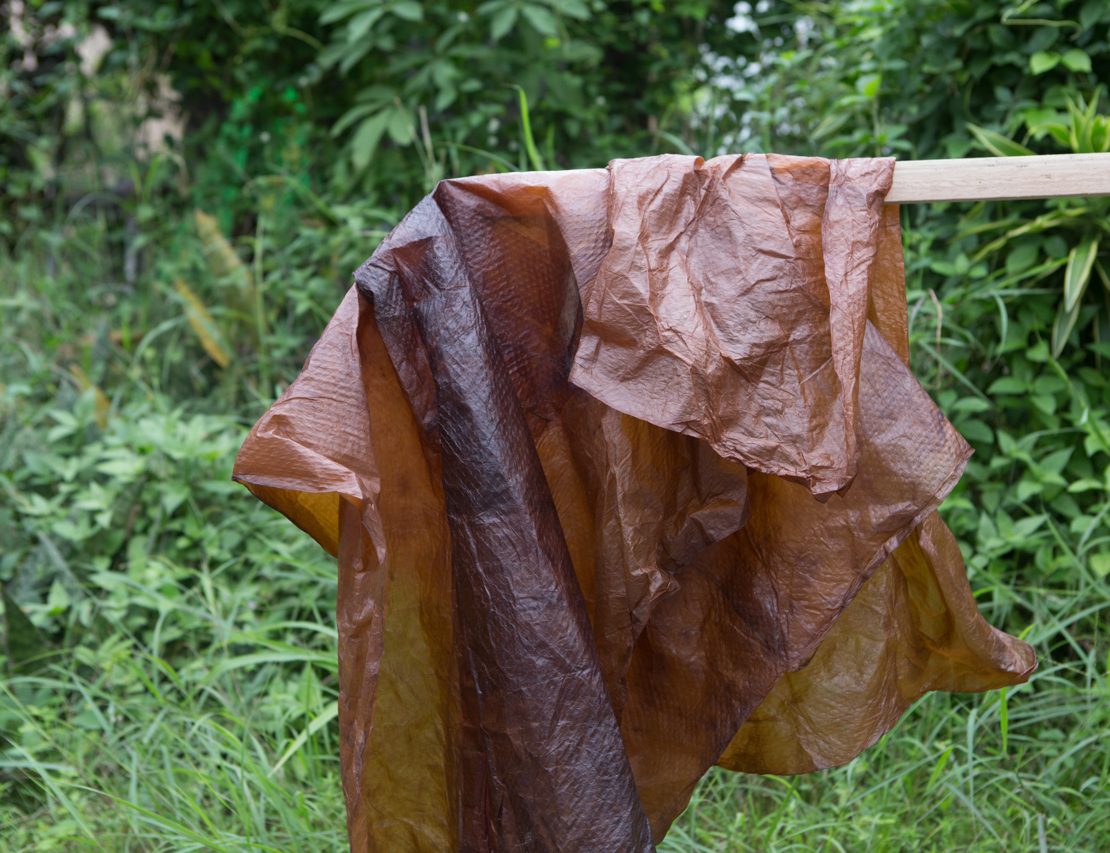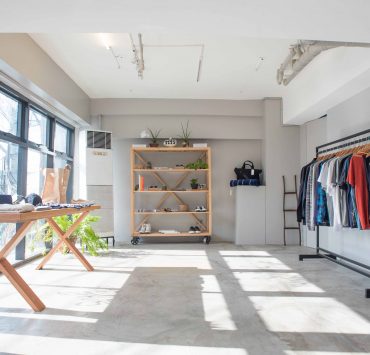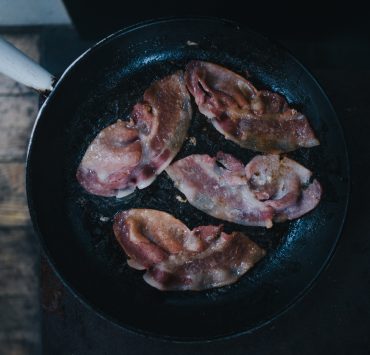“Everyone in this house was having a hard time,” sustainable designer Hazel Roldan tells me. “At first, I stored it in my dad’s shelf in the garage. When he opened [the container], he got mad. He was like, ‘What’s this? It stinks!’ I stored it inside the house, and the place smelled for 10 days straight.” No, Roldan wasn’t trying to hide a cadaver, like Emily Grierson did in William Faulkner’s A Rose for Emily. The putrid odor came from the bacteria she was cultivating to turn into leather.
“Ito ’yung alaga ko,” Roldan says as she shows me a jar of brown liquid with a thick layer of slimy solid matter on top. She takes out the floating object: the thick, opaque material is popularly known as the scoby or the culture. Once it dries out, it becomes Roldan’s bacterial leather.
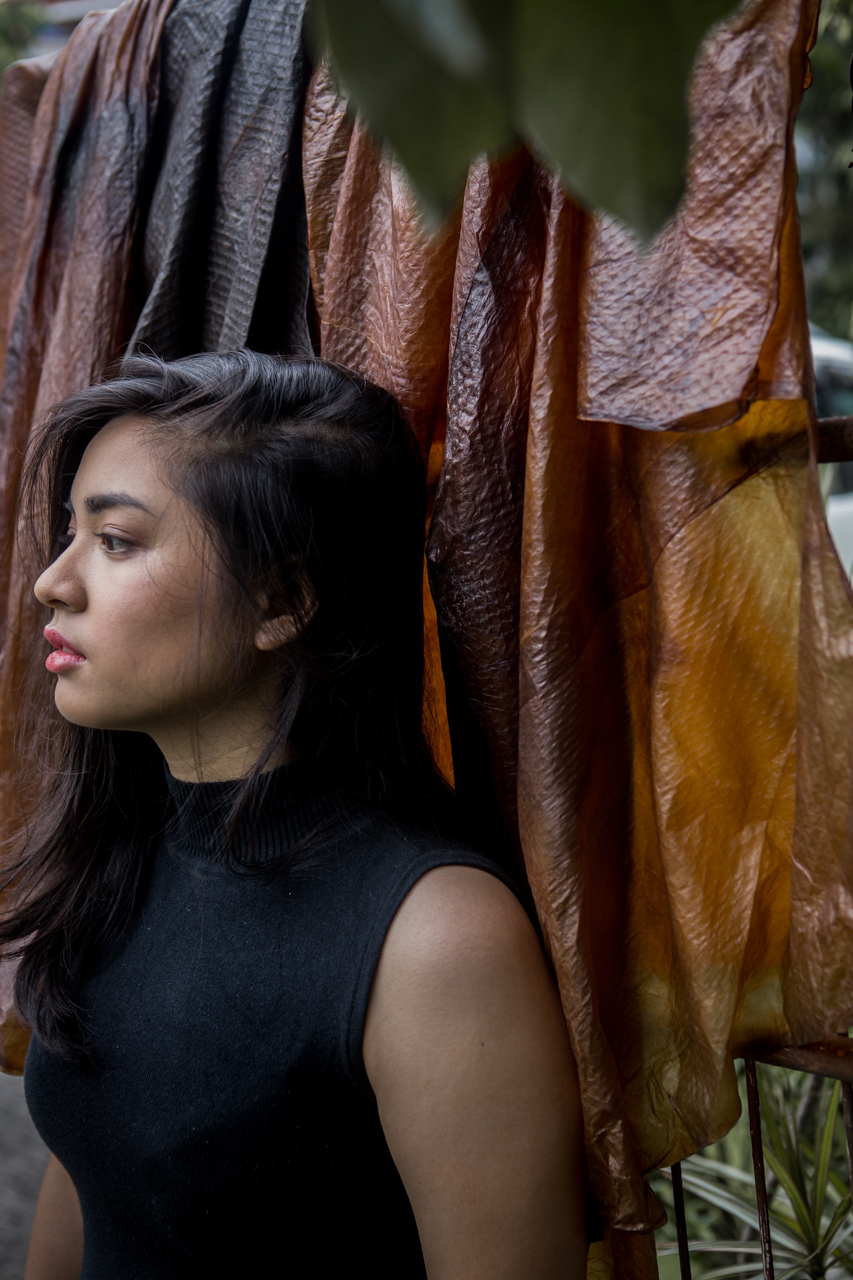
The process begins with brewing tea and sugar. “It took me six months to perfect the ratio,” Roldan says. Then, she waits for Acetobacterxylinum, a type of bacteria naturally found in soil around plants like sugarcane, to populate the mixture. Waiting is a key step in creating bacterial leather. “I have to wait and let it grow. I’m not allowed to touch it.”
It takes approximately three weeks before a culture becomes suitable for sewing. During this period, Roldan needs to provide it optimal conditions. “I switch on the light when it rains or at night to provide the right temperature. When it’s too cold, [the culture becomes] too thin. When it’s hot, it dries up quickly.”
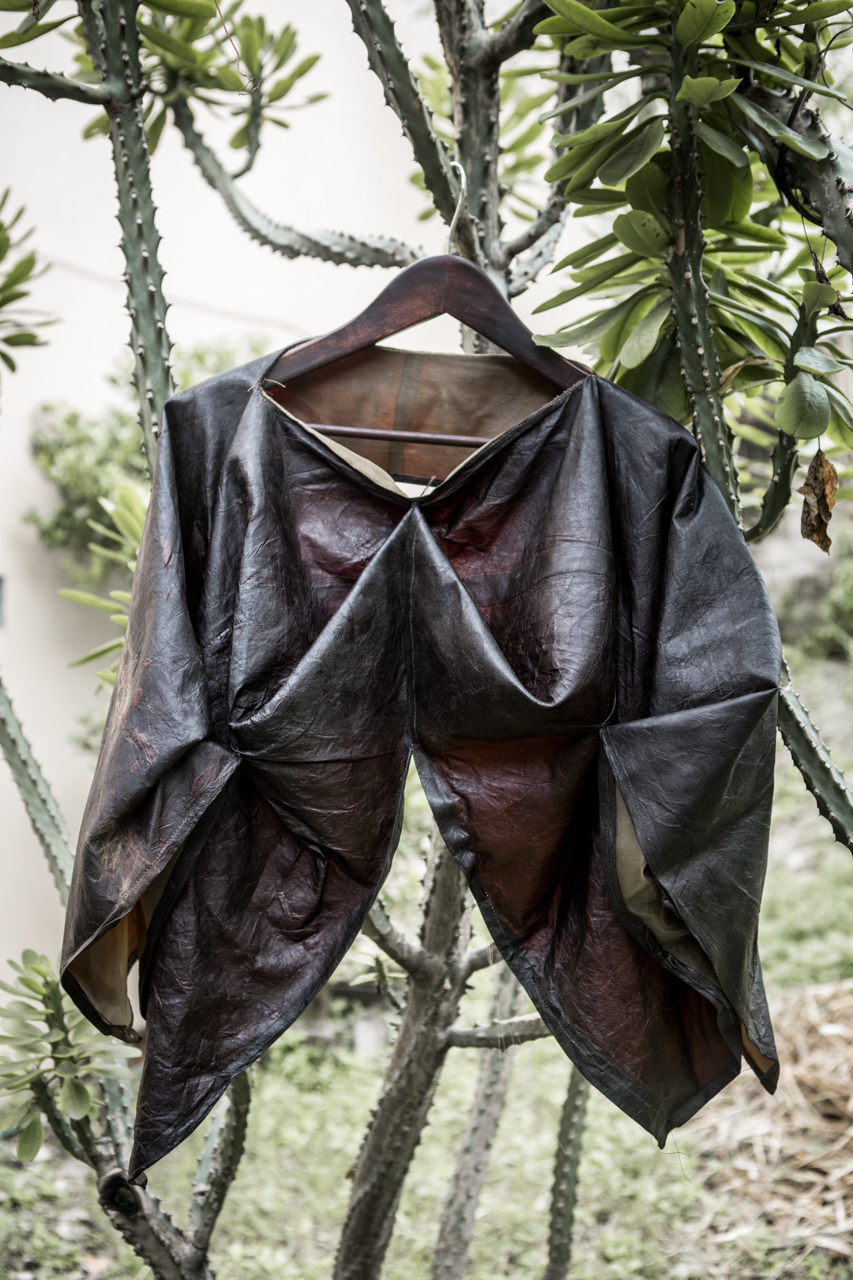
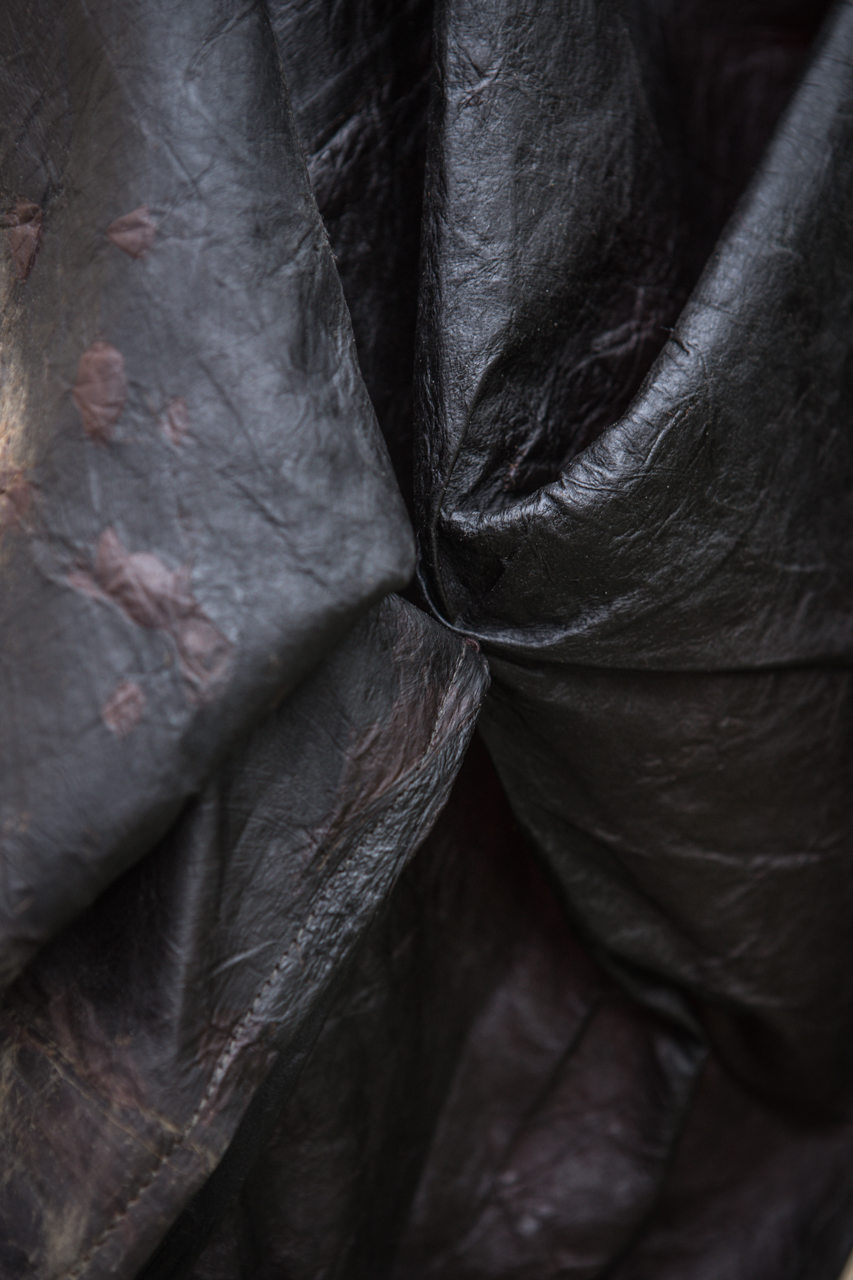
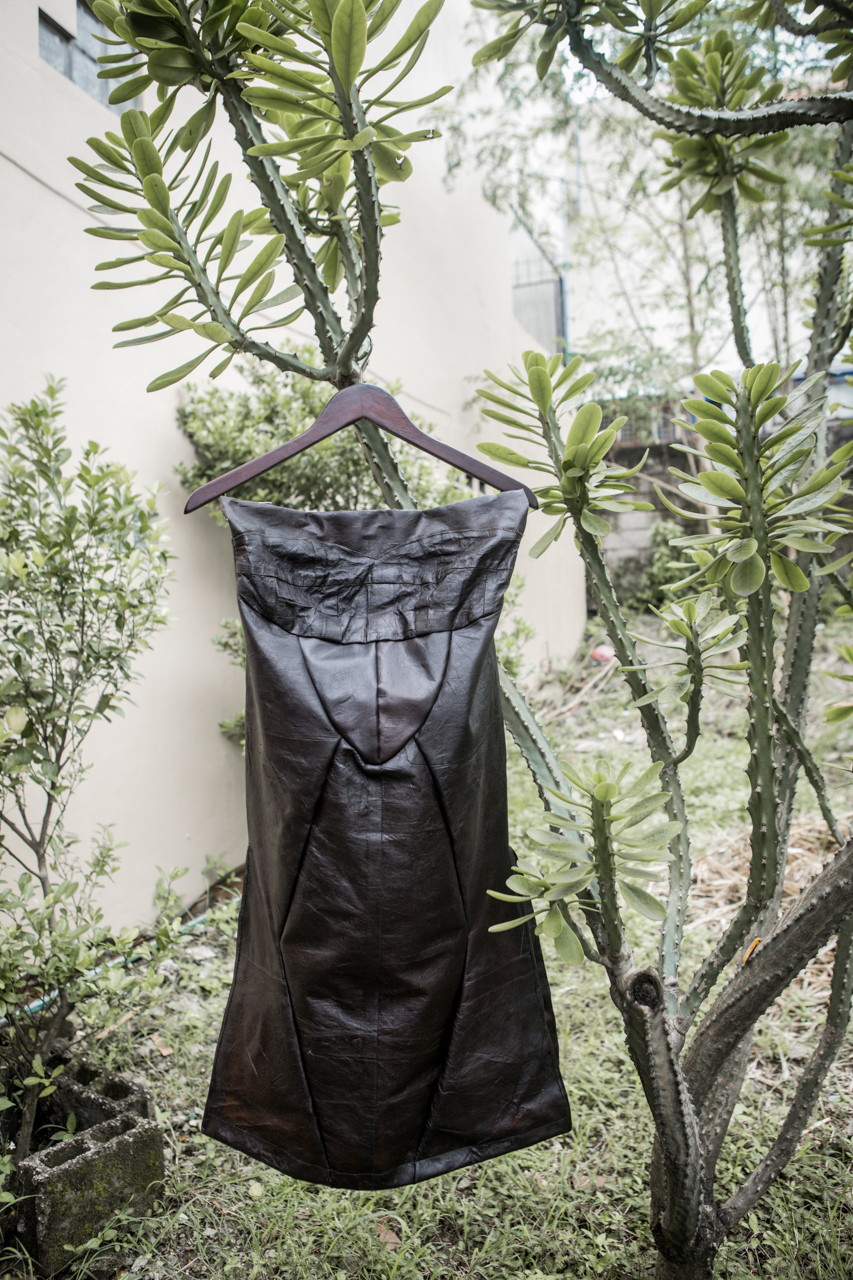
Once the culture has formed, she lays it on a table and allows it to dry, but the tedious process doesn’t stop there. Roldan says the material is a bit unpredictable. “Sometimes it’s sticky, sometimes it’s soggy, and sometimes it’s not.” She even has to stop sewing it every now and then to clean the needle.
Roldan first presented her bacterial leather as finished pieces at her graduation show at the School of Fashion and the Arts. The collection is comprised of clothes in hues of brown, and with their mystical and earthy appeal, she called her presentation Ecdysis: the shedding of old skin for growth.
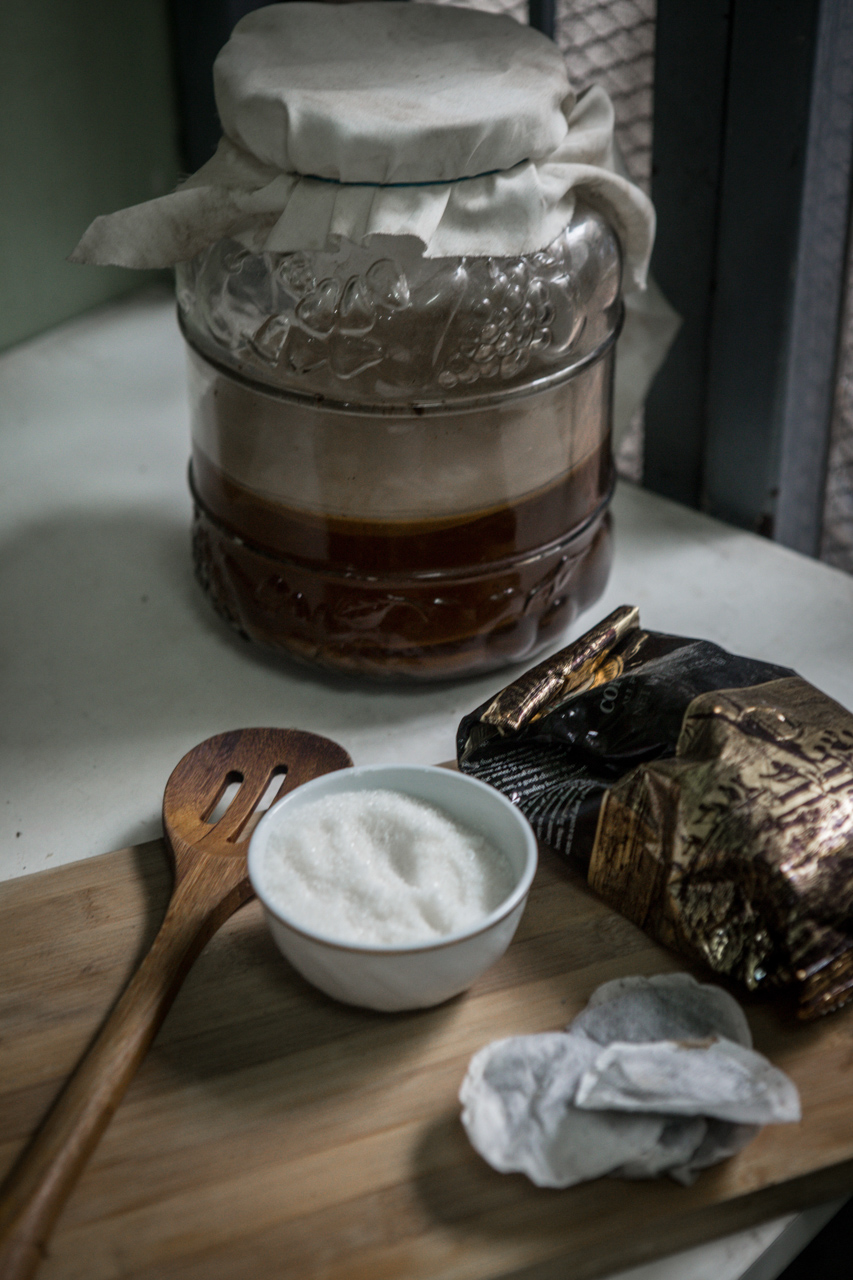
But more than an introduction of a new material, Roldan makes a bigger statement through the collection. She recalls the Rana Plaza incident in 2013, when an eight-story garment factory in Bangladesh collapsed and left 1,134 dead. According to reports, workers were forced to render services despite their workplace’s poor conditions. “It’s all about fast fashion and profit now,” Roldan says. “[On a small scale,] I want to shed that skin and grow our mindset in terms of profit, people, and process.”
Although sustainable fashion is not a new concept, Roldan, who’s also a member of the organization Fashion Revolution Philippines, believes there’s still a need to raise and spread awareness. “For us, education is a priority. Sustainable fashion is not going to be profitable if nobody buys it. If more people [patronize] it, it’s going to be easier to mass produce clothes in an ethical way. It can even be cheaper.” Roldan understands that sustainable fashion can be intimidating, because in subscribing to the idea of sustainability, a person also takes the responsibility of knowing the provenance of every material used in the production of their clothes. Yet sustainability must always be an inherent part of design.
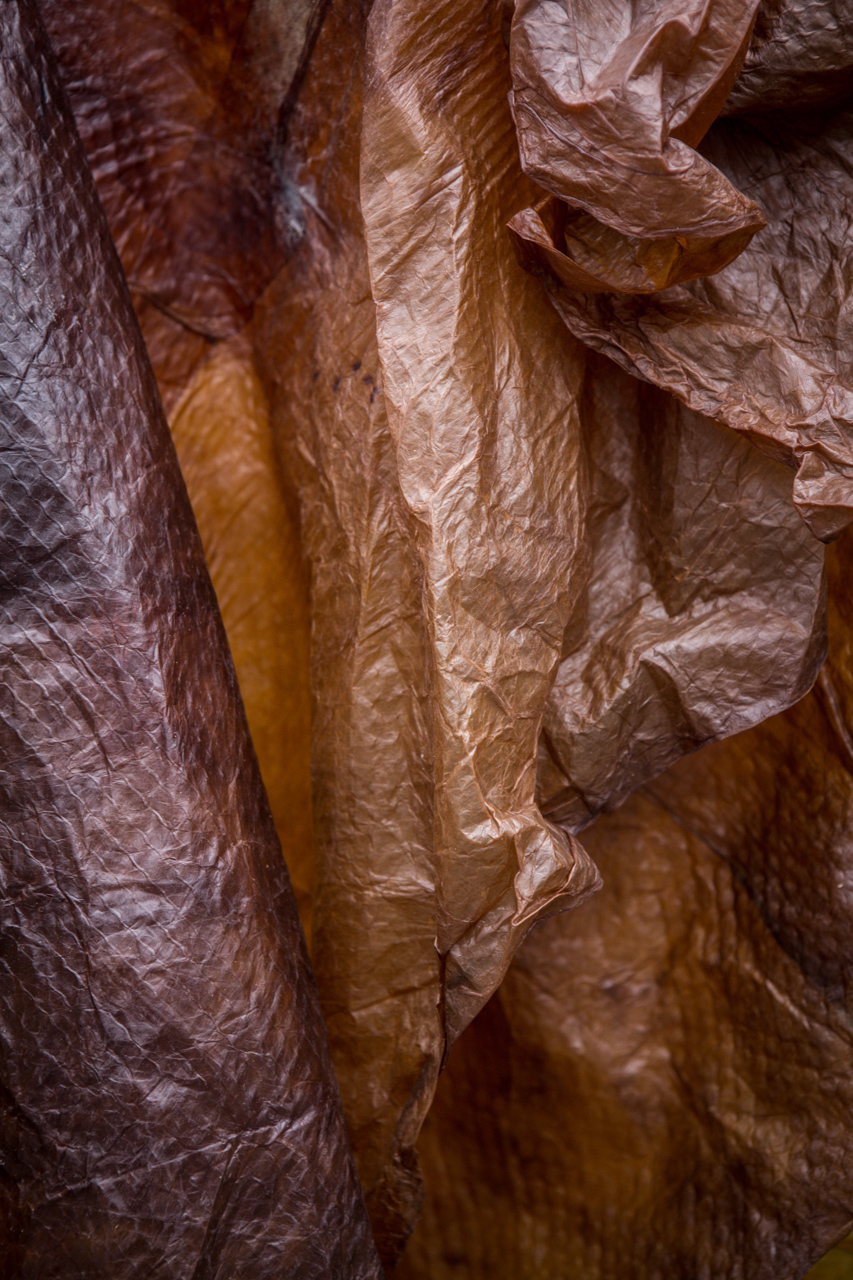
And design is frequently equated with aesthetics, which is a misconception. In architecture, there’s a concept called the Vitruvian Triad: a design is considered good when it is strong (firmitas), has a practical function (utilitas), and is visually appealing (venustas). Roldan follows these criteria when she creates clothes, but she also believes that her work as a designer does not stop there. “When you design, you must know where your designs come from. You also design where it ends up. Will it end up as waste? My work as a designer doesn’t end when my clothes are sold. I now think, ‘Hey, after my consumer uses this, where does my design go?’” she says. “You design a story. You design a life.”
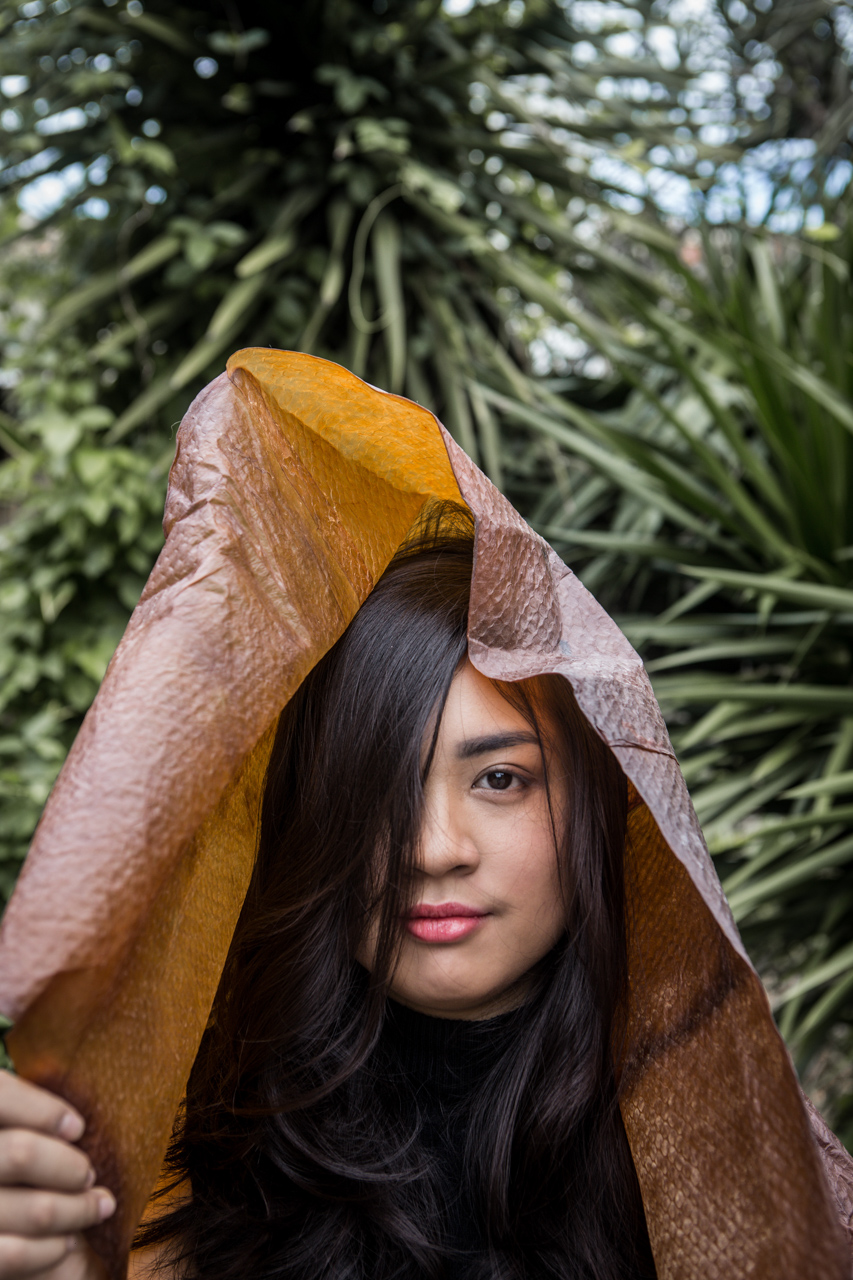
There is still so much work to be done to develop bacterial leather. Roldan believes that she still has to improve her recipe and understand the science behind it. She also needs to find a better way to sew, dye, and coat it, because the material is hydrophilic, meaning it absorbs and holds water. “When it encounters water, it may turn back to its original form,” she says. But this particular fault is also a sign that whatever she designs out of bacterial leather is indeed alive. “So when a hole forms, you just wet the material and it sort of regenerates itself.”
This story originally appeared in Southern Living, November 2017
Read more:
What it means to be a designer, according to minimalist designer Joey Samson
What is ‘slow fashion’ and why should you care?
Sustainability is a long-term affair for these athleisure brands
Writer: OLIVER EMOCLING
PHOTOGRAPHY DANICA CONDEZ


